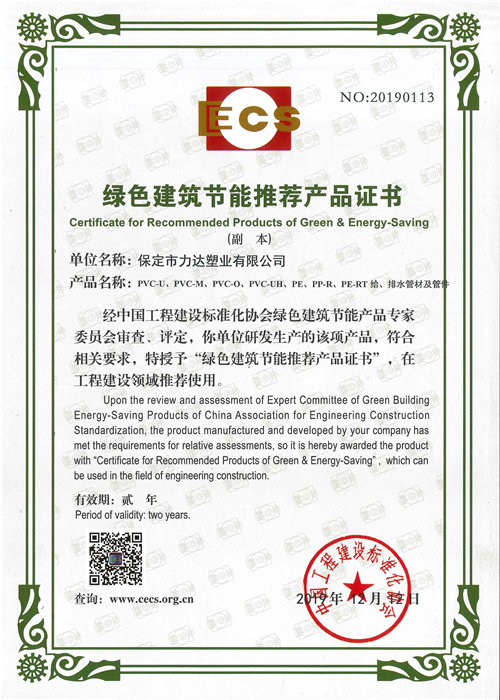Jul . 31, 2024 22:35 Back to list
Exploring the Versatility and Applications of Plastic Pipe Fittings in Modern Plumbing Systems
A Comprehensive Overview of Plastic Pipe Fittings
Plastic pipe fittings are essential components in modern plumbing and piping systems, offering flexibility, durability, and corrosion resistance that traditional materials often lack. With the increasing demand for efficient and sustainable construction and repair solutions, plastic fittings have emerged as a popular choice for both residential and industrial applications.
Types of Plastic Pipe Fittings
Plastic pipe fittings come in various types, primarily made from materials like PVC (Polyvinyl Chloride), CPVC (Chlorinated Polyvinyl Chloride), and PEX (Cross-linked Polyethylene). Each type has its unique properties suitable for different applications.
1. PVC Fittings PVC is one of the most commonly used materials for plastic pipe fittings. It is lightweight, durable, and resistant to chemicals and corrosion, making it ideal for water distribution systems and drainage. PVC fittings are available in various shapes, including elbows, tees, and couplings, allowing for versatile configurations in piping systems.
2. CPVC Fittings CPVC is known for its higher temperature tolerance compared to regular PVC, making it suitable for hot water applications. CPVC fittings provide excellent chemical resistance and are often used in industrial settings and in residential hot water systems.
3. PEX Fittings PEX has revolutionized plumbing with its flexibility and ease of installation. It can expand and contract, reducing the risk of bursting in freezing temperatures. PEX fittings are commonly used in residential plumbing, radiant heating systems, and other heating applications.
Advantages of Plastic Pipe Fittings
plastic pipe fittings

1. Corrosion Resistance Unlike metal fittings, plastic fittings do not rust or corrode. This property extends the lifespan of the plumbing system, significantly reducing maintenance costs and the need for frequent replacements.
2. Lightweight Plastic fittings are much lighter than their metal counterparts, making them easier to handle and install. This characteristic is especially beneficial when working in places where weight is a consideration.
3. Cost-Effectiveness The manufacturing process of plastic fittings typically results in a lower cost compared to metal fittings. Furthermore, their durability and resistance to various factors contribute to lower long-term maintenance expenses.
4. Easy Installation The ease of installation of plastic fittings is another major advantage. Many plastic fittings use solvent welding, push-fit, or crimped connections, eliminating the need for specialized tools or skilled labor for installation. This simplifies the process and reduces labor costs.
Environmental Impact
In an era where sustainability is paramount, plastic pipe fittings are often seen as a more environmentally friendly choice. They are typically manufactured using less energy compared to metals, and many plastic products are recyclable. Additionally, their durability contributes to reduced waste in landfills over time, as they do not need to be replaced as frequently.
Conclusion
As the demand for efficient and sustainable building materials continues to rise, plastic pipe fittings are likely to play an increasingly prominent role in construction and plumbing industries. With their vast range of applications, ease of installation, and numerous advantages, they represent a forward-thinking choice for new projects or upgrades. Whether for plumbing, industrial applications, or drainage systems, plastic pipe fittings are integral to modern infrastructure, providing solutions that meet the needs of efficiency, sustainability, and durability.
-
High-Quality PPR Pipes and Fittings Durable ERA PPR & PVC PPR Solutions
NewsJul.08,2025
-
Black HDPE Cutting Board - Durable, Non-Porous & Food Safe HDPE Plastic Cutting Board
NewsJul.08,2025
-
High-Quality CPVC Panel Durable HDPE & PVC Panels Supplier
NewsJul.08,2025
-
Double PE Welding Rod Supplier - High Strength, Durable & Versatile Welding Solutions
NewsJul.07,2025
-
High-Quality PVC-O Pipe Supplier Durable 75mm PVC Pipe & Connections Leading PVC Pipe Company
NewsJul.07,2025
-
HDPE Drainage Pipe Supplier – Durable & Corrosion-Resistant Solutions
NewsJul.06,2025

